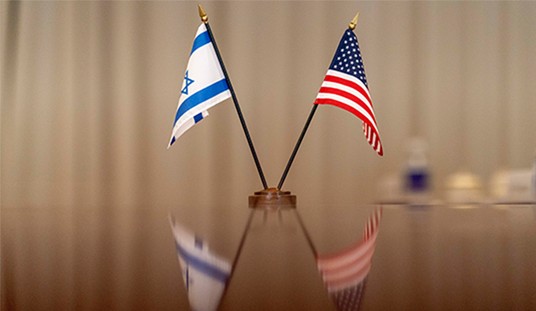By Michael S. Malone
White-tied teenagers and tycoons in tennis shoes were the order of the day at this year’s annual Silicon Valley Comes to Oxford event.
As I’ve noted in past years’ columns about this event – which began with a solo speech of mine back at the turn of the century – SVCO has grown to become not only one of the most important events of the school year for the University’s Said Graduate School of Business, but has also begun to turn Oxford into perhaps the entrepreneurial center of Europe.
At the University itself, the impact has been astounding. That first year, I polled the audience to ask how many of the five hundred in attendance thought of themselves as entrepreneurs. About twenty percent raised their hands. This year the number was ninety percent . . .and nearly the same number had already started their own companies. Meanwhile, the Oxford Entrepreneurs Club, created by undergraduates, now has an astonishing 4,000 members – the largest club on campus, and second only to Stanford University.
SVCO has taken place in good years and bad, at the peak of the dot.com boom and the bottom of the dot.com bust, in the weeks after 9/11 – and, this week, in the midst of the global uncertainty over the credit crunch. And this year, as always, the conference both reflected the events taking place outside the University’s walls and the singular sensibility of entrepreneurs who refuse to be affected by it.
This paradox was best exemplified by two events that took place about a dozen hours apart. On Sunday night, for the first time, we participated in a debate at the legendary Oxford Union, the great gothic wooden hall (built in 1823) that has served as the training ground of generations of future British MPs and prime ministers. It was a bit intimidating, after warm Winter Pimms in the lounge, to tour the Union’s hallways and look at photographs of participants in past debates, including Albert Einstein, Mother Theresa, Malcolm X and Benazir Bhutto (the last a former Union president).
The theme of the debate was “Resolved: The problems of tomorrow are greater than the entrepreneurs of today.” Needless to say, this was like waving a red flag in front of real entrepreneurs, who believe in their chromosomes that no problem is unsolvable to a dedicated start-up team armed with enough venture capital. Needless to say, the entire line-up in opposition to the resolution was high tech types, including Jerry Sanders founder of San Francisco Science venture capital, Biz Stone, co-founder of Twitter, Julie Meyer of Ariadne Capital, and Reid Hoffman, founder of LinkedIn.
By comparison, and perhaps just as unsurprisingly, the side in support of the motion consisted mostly of academics and World Bank types. They seemed a lot more comfortable in their tuxedos, while the Valley folks had that look of high school juniors dressed up for their first prom. In fact, they looked a lot less comfortable than the young officers of the Union, who weren’t much older than high school juniors and were dressed in white tie and tails.
To have listened to the opposition, you wouldn’t have guessed that any of them had a single doubt that entrepreneurs could handle any task set before them, short of immortality – and they were willing to give that a shot, too. I did my part as well, giving the first opposition speech from the audience – all while wondering if any of the studs had popped out of my tuxedo shirt.
In the end, the opposition won the day – a victory made all the more remarkable because Yanks are notorious for never winning Union debates. As we celebrated with more drinks – alcohol being a central leitmotif of Oxford life for about eight centuries now – one might have been forgiven for assuming that the greatest strength of entrepreneurs is their eternal optimism.
And indeed, it probably is. But the tone of that optimism was very different when the entrepreneurs weren’t called upon to defend themselves, but were instead talking in front of several hundred MBA students, essentially younger versions of themselves. When I polled them on how long they thought this current financial crisis would last, the consensus of the dozen Silicon Valley panelists was 18-24 months. And each of the panelists — which now included Pat House, co-founder of Siebel Systems and one of tech’s most successful woman executives, and Chris Sacca, the guy who used to run special projects and acquisitions for Google – in turn offered suggestions on how they intended to get through the coming hard times. Basically, it came down to; hold onto your cash, get as liquid as possible, cut back on everything but essentials and network like crazy.
For the first half hour, it was about as gloomy a panel discussion as I’ve ever led at Oxford. Like everyone right now, even Valley tycoons are pretty much hunkered down waiting to see just how big and ugly this current downturn will be. Only then will they really know how to respond.
But all of this gloominess couldn’t last long – especially not with this crowd – and before long they were again happily speculating on what would be the Next Big Thing. Being entrepreneurs, they saw challenges in difficulties, opportunities in tough times. Indeed, many of the hot new businesses they recommended to the assembled MBAs included developing new applications for Web 2.0 social networks (because the cost of entry is so low – critical at a time when venture capital is in trouble), developing tools to help users locate the lowest cost products and services, and, ultimately, taking advantage of the fact that historically recessions are the best times to start new companies (because the competition is distracted, talent is more available, and – unfortunately — you are likely to have a lot of free time yourself.)
Reinforcing these suggestions was the fact that many of the panelists were either using the time to double-down on the R&D investments in their companies in preparation for coming out of the recession hot and fast. Or they were taking their own advice and had gone to earth again to start new companies. Of the latter, the most intriguing was Pat House’s start-up, once again with Tom Siebel. Other than its existence, Pat was willing to indulge nothing – I’ll let you know when, and if, I ever find out.
In the meantime, talking about the world after the current crisis seemed to revitalize the panelists and audience. Optimism is indeed the natural state of entrepreneurs, and the future is their true home. By afternoon, the master classes were jammed with students, enthusiastically taking notes and asking questions of the veterans about pitching business plans, raising money, and growing customers.
And that evening, Mandela hall at Said Business School, was jammed to hear speaker Elon Musk – the man behind both the Tesla electric sports car and the Space X rocket – tell of his own plans for the future. Thus, even as the world around them seemed to be sinking in the mud, the entrepreneurs, young and old, as Silicon Valley Comes to Oxford were still looking towards the stars.









Join the conversation as a VIP Member